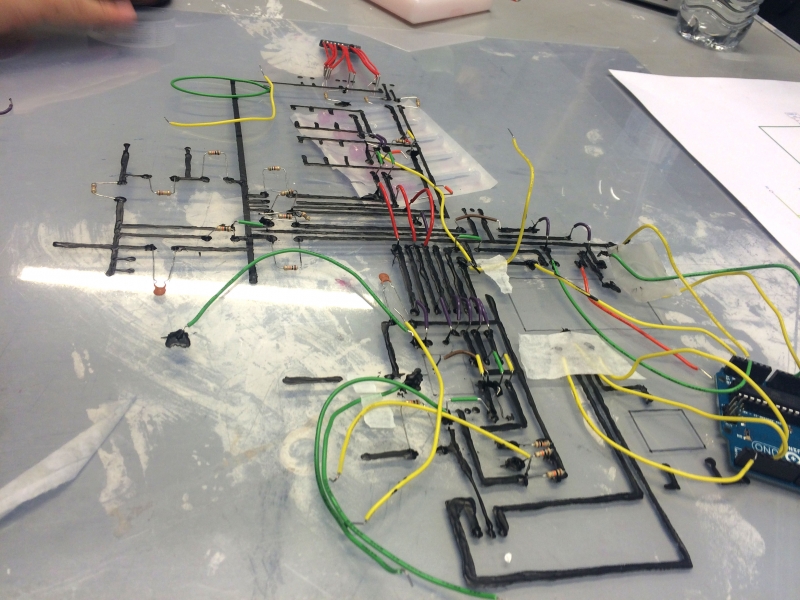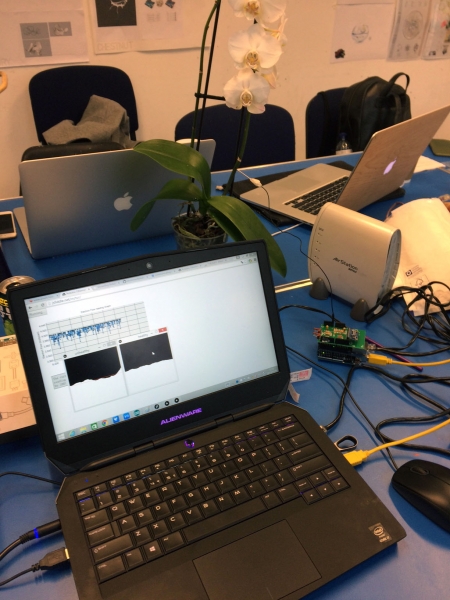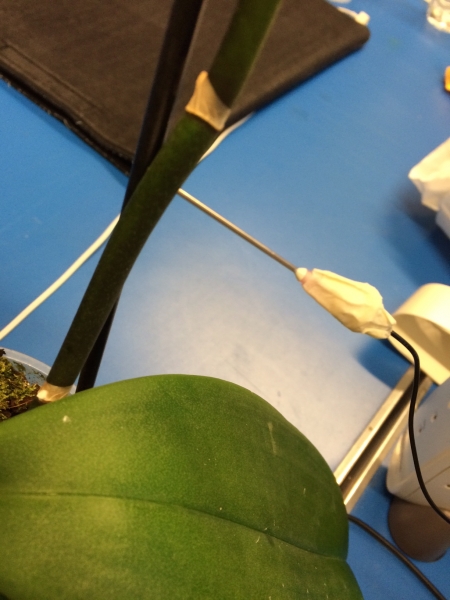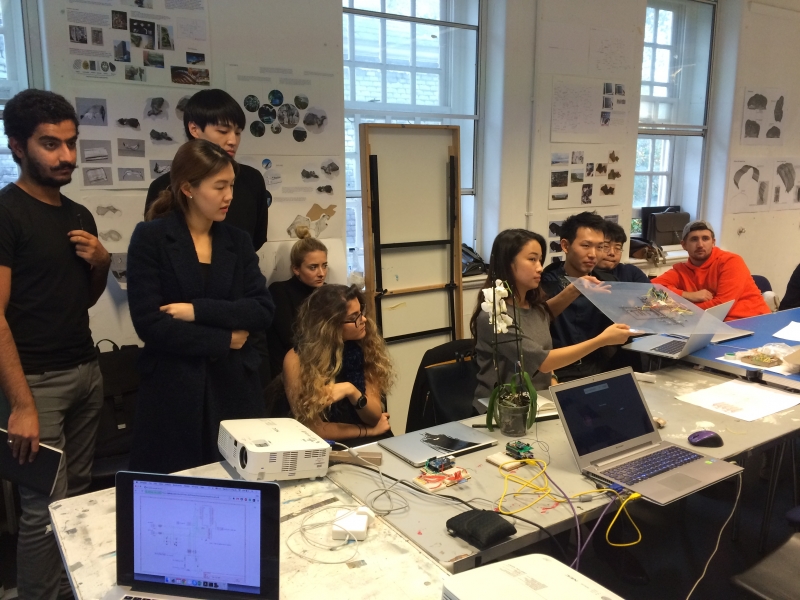Plants as Sensors: The Digital Practice Exchange at CCW
The ‘CCW Digital Makers Group’ at UAL’s Camberwell, Chelsea & Wimbledon (CCW) Colleges of art recently started a new initiative to help share practice across courses and colleges at UAL.
The first Digital Practice Exchange took place at Chelsea on 3rd Nov 15. We were invited by Cyril Shing to join his BA Interior & Spatial Design students to find out how they have been experimenting with technology as part of their design practice.
Cyril set the students a collaborative brief to get them working together in specialist groups on a specific concept, this also include Year 2 & 3 working together.
The students were asked to embark on a project, which included interactive and sensory technologies such as Arduino. All the students had never encountered using technologies like Arduino before until starting this course.
|
|
 |
Part of the challenge for students was to discover, learn and test how to use Arduino and develop circuitry (some interesting experimentation with conductive paint) and code, this was all self-directed learning and the students really responded to the challenge.
The students described their project and development process to us and the presentation quickly turned into a very useful and mutually beneficial and extremely interesting studio/project critique.
The students have developed some fantastic work as part of their ‘PlaNET Project’.
The students are using Arduino and open source technologies and code to transmit sensory data from plants; this could include data such as nutrition and its environmental conditions. This data is fed through a hypodermic syringe needle into Arduino and processed though a bespoke code into a visual interface.
They are currently at the stage that this data of ‘how the plant is feeling’ can be visualized as live data.
The hope is these students will develop this open source software & hardware as a packaged and transferable product where ‘plants as sensors’ can be set up across many locations and data gathered for use in gathering environmental information of towns & cities or to harvest energy from the plants.
 |
 |
Who knows where this will lead? Talking plants, plant independence, mobile plants, what if plants could talk to each other through AI or plants were in mobile drone enable plant pots and could all move to help a fellow plants in distress in polluted parts of the city, a mobile eco system??
I really like this project its great fun and has some serious potential for supporting environmental research.
Great work Cyril and team PlaNET
Read more about CCW Digital Learning Teaching & Enhancement.





Comments
See also a fantastic blog post from 'A new design experience' ISD student Gonzalo Caravia Garcia on a follow up workshop with Gravity Sketch team exploring Virtual Reality through Oculus Rift - http://gonzalocaravia.myblog.arts.ac.uk/2015/12/03/a-new-design-experience/